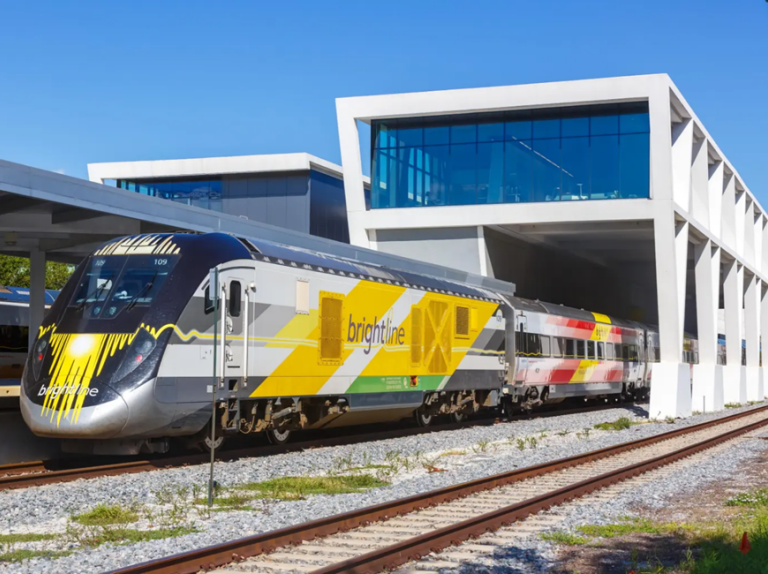
U.S. Travel hosted its third annual Future of Travel Mobility conference, bringing together US industry leaders in transportation and sustainability, and policymakers with the aim of innovating the travel sector. Key themes discussed included opportunities to enhance sustainable travel, creating a seamless travel experience, and driving innovation through public and private partnerships.
At the U.S. Travel Future of Travel Mobility event in Washington, DC USA, I gathered more insight into innovative ideas to make the future of travel more accessible, sustainable, seamless, and to help it rise above current challenges. This gathering of US industry leaders brought together travel and business leaders, along with government officials and policymakers, to accelerate action on central issues impacting the traveler experience. Equity, diversity, and inclusion was a theme throughout, helping foster a more accessible, welcoming, and inclusive travel industry to offer more memorable experiences for travelers.
This year’s event centered around key initiatives aimed at driving innovation through public and private partnerships, mobility, enhancing sustainable travel options, and creating a more seamless travel experience. In relation to increased mobility, various themes were discussed, including the expansion of high-speed trains in Florida, air taxis at airports, and charging stations at hotels, restaurants, and entertainment venues within a destination.
Policymakers gathered to understand how to utilize these innovative modes of transportation to transform the ways travelers can move more easily around a destination. Collaboration between the public and private sectors is vital to creating scalability for new projects, gain stakeholder support, secure funding for alternative forms of fuel, and foster policy ideas that accelerate the future of travel. The implementation of these initiatives, including the use of Sustainable Aviation Fuel to reduce carbon emissions, requires the buy-in of all stakeholders through government incentives and the development of tourism infrastructure that anticipates future challenges and offers viable solutions.
Regarding legislation, policymakers worked to accelerate action on the Federal Avaition Administation Reauthorization Bill to boost aviation safety in the wake of alarming close calls and misses involving US commercial airlines. In addition, travel leaders explored ways to enhance travel safety and security, including updated airport technology, increased mobility, and mechanisms to achieve carbon neutrality by 2050. Woven throughout each of these themes was the concept that policymakers must work together to provide scalability to these projects, build necessary infrastructure, and gain buy-in from the community on creating a more seamless experience.

Innovative and Emerging Travel
Innovative modes of transportation, including high-speed rail, air-taxis, sustainable aviation fuel, and wheelchair-accessible airline seats aim to increase efficiency and offer truly inclusive travel experiences. To make these innovative forms of travel a reality, a multi-stakeholder approach will be required, involving destination organizations as well as industry leaders directly in discussion of policy, regulation, and economic development. Equipped with this knowledge, industry leaders should communicate relevant information to the travel audience in a consistent manner that educates and eases traveler anxiety.
To get air taxis off the ground, Archer Aviation introduced commercial electric air taxis in conjunction with United Airlines with the goal of deploying 6000 aircraft by 2030. Technically known as an EvTOL aircraft, which stands for electric vehicle takeoff and landing, the electric air taxi is designed to carry four passengers and one pilot at speeds of up to 200 miles per hour. Once fully authorized by the Federal Aviation Administration (FAA) and up to scale with the manufacturing, in its first flight, Archer’s electric vehicle will connect Newark Liberty International Airport in New Jersey with the downtown Manhattan Heliport in New York. The journey is expected to take less than 10 minutes, with cities like Chicago to follow. This innovative form of transportation is aimed at providing safe, quick, quiet, and cost-effective transportation for airline passengers and removing barriers that cause unnecessary friction.
To accelerate high speed rail in the United States, Brightline began service between Orlando, Florida and destinations in southern Florida (including Miami), offering an alternative to the three plus hour drive typical between these cities. Train station amenities for travelers include parking garages, ample room for checked luggage, rides to and from the station, and relaxing lounges for premium ticket holders. Communication amongst stakeholders is key in creating policy and innovation that supports infrastructure for these projects that support increased traveler mobility.

Seamless and Secure Travel
Modern technologies have emerged in the travel industry with the goal of creating a seamless experience for the traveler. There has been an increase in the use of biometrics, touchless digital technology, and facial recognition at airports across the country, aiming to reduce friction and increase efficiency at a variety of touch points, including airport security, curbside pickup, and hotel check-in. Trusted traveler programs including One step security, and TSA-Pre check, are aimed at expediating the flow of passengers and baggage to their onward destinations and reduce unnecessary inconveniences.
Regarding accessibility, Delta Airlines began testing a new wheelchair seat that detaches the headrest for storage away from the rest of the seat. The seat base folds up to the back of the space and the headrest is raised so the wheelchair can back into the space comfortably. US industry leaders can work to get ahead of these threats by creating a smooth experience that reduces traveler anxiety and unnecessary friction. Creating inclusive experiences helps travelers feel welcome, seen and heard at airports, hotels, and railways.
Sustainable Travel
For US industry leaders to facilitate these stewardship initiatives, they will need to overcome obstacles to making travel more sustainable including government collaboration, price barriers, and knowing where to build electric vehicle charging station infrastructure to ease traveler anxiety. One of the major discussion points in achieving net carbon zero emissions by 2050 is through the expansion of Sustainable Aviation Fuel (SAF). California is the one US state that consumes the most SAF, and it passed legislation recently to increase SAF production capacity and infrastructure to contribute 20 percent of all aviation fuel by 2030. However, organizations aiming to increase the capacity of SAF in their destinations have obstacles including government collaboration, cost, and limited supply.
Recently, American Airlines committed to covering more than 620 million gallons of SAF by 2030 and partnered with other stakeholders in calling on governmental support to produce sustainable aviation fuels at scale to meet carbon emission reduction goals. To create a more integrated approach to electrified economies, US travel leaders can assist in facilitating a multi stakeholder approach to EV (Electric Vehicle) production to expand infrastructure funding in the destination, reduce traveler anxiety about electric vehicles, and achieve sustainability goals.
Summary
In summary, progressing further on these initiatives towards an electric future requires a multi- stakeholder approach that includes strategic planning, implementation, advocating for necessary infrastructure to support the transition to a green economy. Innovative projects including high speed rail, electric vehicle charging stations, sustainability at hotels, and the introduction of sustainable aviation fuel are at the forefront in the transformation toward sustainable travel. Although US industry leaders will not be expected to be experts in each one of these areas, their role is to collaborate with stakeholders, educate travelers to ease anxiety, and create a welcoming environment in which all travelers feel seen and heard.


